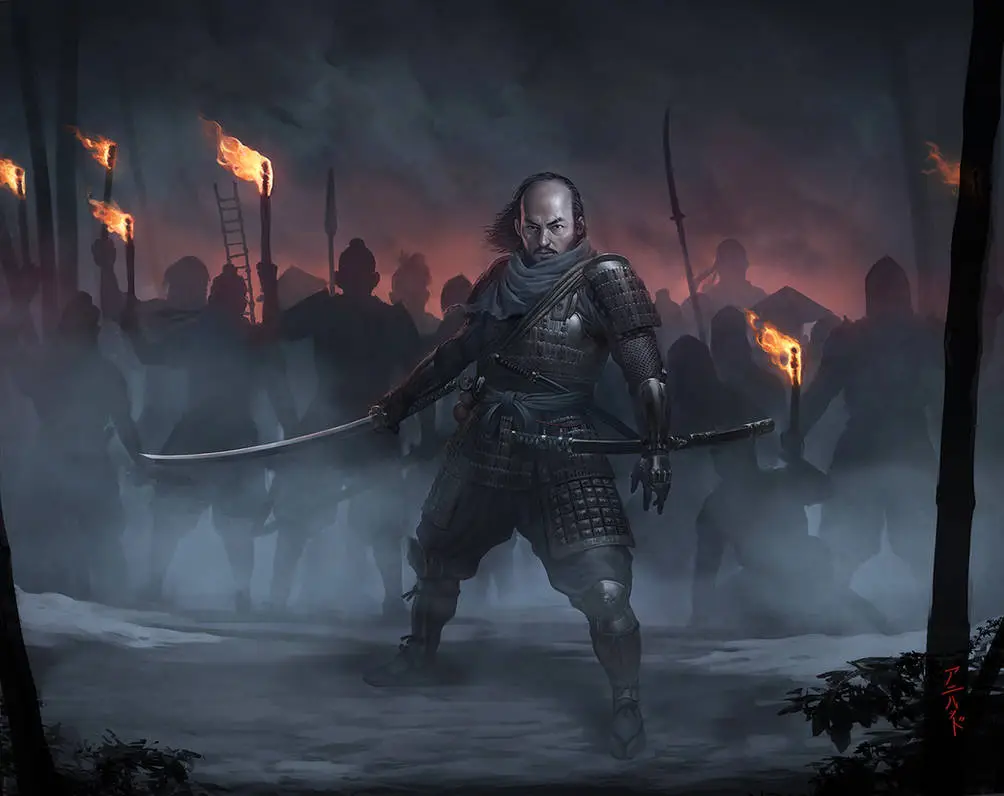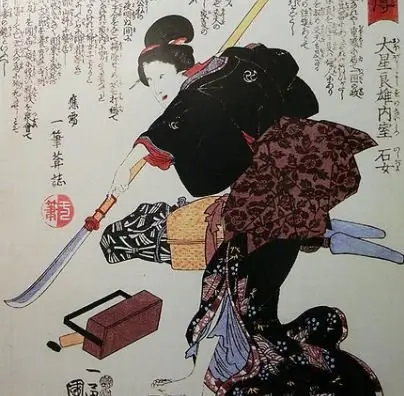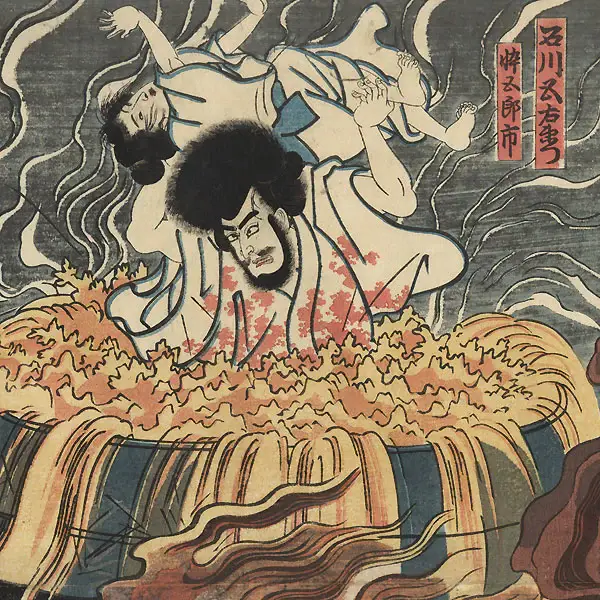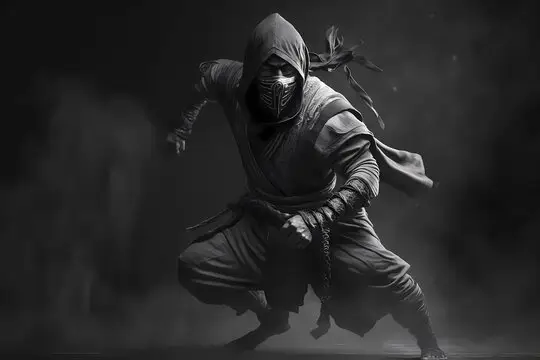Ninjas, or shinobi, have captivated the world with their mysterious, stealthy prowess and remarkable skills in espionage and combat. Throughout Japanese history, these covert agents played important roles in warfare, gathering intelligence, and executing covert missions.
While many fables and myths have been woven into Ninja culture and history, these historical figures actually existed, and some of them were as amazing as the stories make them out to be. This piece will discuss seven famous Ninjas in Japanese history.
Here are the seven most famous ninjas in Japanese history.
1. Hattori Hanzō

Hattori Hanzō, also known as Hattori Masanari, was born into the prestigious Hattori family, which was renowned for its ninja heritage. He served the Tokugawa clan and became one of the most revered samurai and ninjas of the Sengoku or Warring States period.
Hanzō was instrumental in securing Tokugawa Ieyasu’s rise to power. His strategic brilliance and battlefield bravery were evident during the Battle of Sekigahara, where he led a group of Ninjas to infiltrate the enemy lines and occupy important strategic positions.
Hanzō’s contributions to the Tokugawa shogunate were not limited to the battlefield; he also established a network of spies and informants that greatly enhanced Ieyasu’s intelligence capabilities. His legacy lives on in historical texts and popular culture, where he is often depicted as the archetypal ninja, a master of both martial arts and stealth.
2. Fūma Kotarō
Fūma Kotarō was the fifth leader of the Fūma clan, a notorious ninja group in the Kanagawa Prefecture. The Fūma ninjas were known for their skill in guerrilla warfare tactics and naval intelligence. Kotarō, whose real name is believed to be Kazama Kotarō, took over leadership of the clan during a turbulent period of Japanese history marked by constant warfare and shifting alliances.
Kotarō’s most famous exploit was his conflict with Hattori Hanzō. He led several successful raids against the Tokugawa forces, leveraging his expertise in naval combat and unconventional warfare. In 1581, he ambushed Tokugawa’s forces and devastated them with fire. Despite his eventual defeat, Kotarō’s name remains widely popular in Ninja culture.
3. Mochizuki Chiyome

Mochizuki Chiyome stands out as one of the few renowned female ninjas in history. She was the wife of samurai Mochizuki Nobumasa and is credited with creating the kunoichi, an all-female ninja group.
Chiyome’s network of kunoichi (female ninjas) were used as spies and assassins during the warring state period. They were recruited from various backgrounds and were notorious for their disguise and ability to pose as couriers, servants, and even prostitutes. Her ability to operate under the radar and train women in espionage made her a formidable figure in the underworld.
Chiyome’s network played a crucial role in helping the Takeda clan to gather intelligence and expand. However, despite her wide intelligence network, the famous ninja was assassinated by Hatori Hatto around the 1590s.
4. Kato Danzo
Kato Danzo, often referred to as “the Flying Kato,” was known to practice sorcery and possess incredible skills in illusion and deception. Born in Owari Province, Danzo’s early life remains largely obscure, but he rose to prominence through his mastery of ninjutsu and his ability to perform seemingly supernatural feats.
Danzo’s most famous act was infiltrating the castle of Naoe Kanetsugu by pretending to be a bird seller. His uncanny ability to blend in and gather intelligence made him a valuable asset and a legendary figure in ninja lore. One of his legendary feats includes the theft of a prized falcon from the warlord Uesugi Kenshin, showcasing his skills in both stealth and trickery.
Danzo was betrayed by Takeda Shingin and executed by beheading in 1569
5. Ishikawa Goemon

Ishikawa Goemon is unlike all the other famous Ninjas on this list. He is often compared to Robin Hood due to his reputation for stealing from the rich and giving to the poor. Originally a ninja, Goemon turned into a rogue outlaw. His early life is shrouded in mystery, but he is believed to have been a samurai before becoming a ninja and later an outlaw.
Goemon’s most famous act of rebellion was his attempted assassination of Toyotomi Hideyoshi, the powerful daimyo and unifier of Japan. The assassination attempt failed, and he was captured and later executed with his son by boiling. Goemon’s daring and his subsequent martyrdom inspired countless stories and plays, making him a cultural icon of defiance and bravery.
6. Momochi Sandayū
Momochi Sandayū is one of the most famous ninjas in Japanese history. He was a famous leader in the Iga ninja clan. He played a crucial role in developing and preserving ninjutsu techniques. Sandayū’s contributions to the ninja arts were profound, and he is often credited with codifying many of the principles and practices that define ninjutsu.
Sandayū’s teachings laid the foundation for many future ninjas. His emphasis on strategy, stealth, and martial arts continues to influence modern interpretations of ninja skills and training.
He established several ninja schools, including the famous Momochi-ryu, where he taught a wide range of skills, from espionage to survival tactics. Sandayū’s legacy and Ninja techniques remain a cornerstone of ninja history.
7. Sarutobi Sasuke
Sarutobi Sasuke is a figure that straddles the line between history and legend. While some historians question his existence, his stories are integral to Japanese folklore. Sasuke is often depicted as a young, agile ninja with exceptional skills in acrobatics and combat.
Sasuke is depicted as a master of agility and stealth, often performing incredible feats such as climbing sheer cliffs and leaping across great distances. His tales are emblematic of the romanticized view of ninjas as superhuman warriors.
According to legend, Sasuke was a member of the Sanada Ten Braves, a group of ten ninjas who served the warlord Sanada Yukimura. His adventures, filled with daring escapes and heroic battles, have been immortalized in literature, theatre, and film, contributing to his status as a legendary figure in ninja lore.
